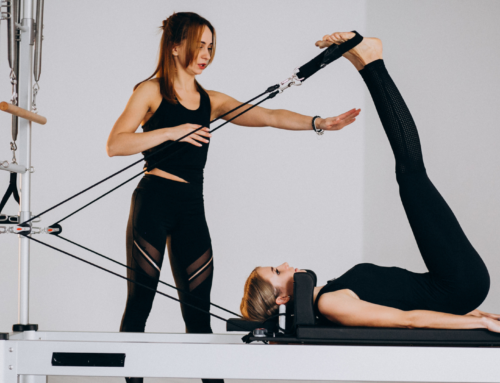Osgood-Schlatter disease is a common musculoskeletal condition that primarily affects adolescents and young athletes, especially those engaged in activities involving repetitive knee stress, such as running, jumping, and sports like soccer or basketball. This condition can cause discomfort and pain around the knee, impacting an individual’s ability to participate in physical activities. In this blog post, we will delve into the symptoms, causes, risk factors, and various treatment options for Osgood-Schlatter disease. By gaining a better understanding of this condition and its management, both parents and affected individuals can take proactive steps to alleviate pain and support a healthy, active lifestyle.

What Is Osgood-Schlatter Disease?
Causes and Risk Factors
Osgood-Schlatter disease, often referred to as OSD, is an overuse injury that primarily affects the growth plate in the upper part of the shinbone (tibia), just below the kneecap (patella). It typically occurs during the adolescent growth spurt when the bones are growing rapidly. The key contributing factors include:
- Repetitive Stress: Activities that involve frequent running, jumping, or squatting can strain the patellar tendon, which attaches to the shinbone.
- Muscle Imbalances: Weakness or imbalances in the thigh muscles, especially the quadriceps, can exacerbate the strain on the patellar tendon.
- Age and Gender: Osgood-Schlatter disease is most common in adolescents between the ages of 10 and 15 and is more prevalent in boys.
- Rapid Growth: Adolescents who experience a sudden growth spurt may be more susceptible to OSD due to the rapid changes in bone length and muscle tension.
- Sports Participation: Participation in sports that involve repetitive knee-bending motions, such as soccer, basketball, or gymnastics, increases the risk.
Recognizing the Symptoms

The hallmark symptom of Osgood-Schlatter disease is knee pain, particularly just below the kneecap. Individuals with OSD may experience:
- Tenderness and swelling at the top of the shinbone (tibial tubercle).
- Pain that worsens with activities like running, jumping, squatting, or climbing stairs.
- Stiffness and discomfort, especially after periods of inactivity.
- A bony bump or prominence at the site of pain.
It’s essential to note that the severity of symptoms can vary from person to person. Some may experience mild discomfort, while others may have more pronounced pain that limits their athletic performance and daily activities.
Treatment Strategies for Osgood-Schlatter Disease

Rest and Activity Modification
Rest and activity modification are essential components of treating Osgood-Schlatter disease. Reducing or temporarily ceasing activities that exacerbate knee pain, especially high-impact sports, allows the affected area to heal. Low-impact exercises like swimming or cycling can be suitable alternatives to maintain fitness during recovery.
Physical Therapy
Physical therapy plays a vital role in managing OSD. A trained physical therapist can develop a tailored rehabilitation program focused on:
- Strengthening the quadriceps, hamstrings, and hip muscles to improve overall knee stability and reduce strain on the patellar tendon.
- Stretching exercises to improve flexibility and reduce muscle tightness.
- Techniques to address muscle imbalances and correct biomechanical issues that may contribute to the condition.
Physical therapy sessions can help alleviate pain and support the healing process.
Pain Management
Over-the-counter pain relievers like non-steroidal anti-inflammatory drugs (NSAIDs) can help reduce pain and inflammation associated with Osgood-Schlatter disease. However, it’s important to use them under the guidance of a healthcare professional and for short-term relief.
Patellar Straps and Bracing
Patellar straps or braces can provide additional support to the patellar tendon and may help reduce pain during activities. A physical therapist or orthopedic specialist can recommend the appropriate type and fit.
Corticosteroid Injections
In severe cases of OSD with persistent pain and inflammation, a healthcare provider may consider corticosteroid injections into the affected area. These injections can provide temporary relief, but their use is typically reserved for more challenging cases.
Surgery
Surgery is rarely necessary for Osgood-Schlatter disease and is typically considered only when conservative treatments have failed, and symptoms persist into adulthood. Surgical procedures may involve the removal of the bony prominence or the tibial tubercle.
Preventing Osgood-Schlatter Disease
Prevention plays a crucial role in managing OSD:
- Proper Warm-Up and Cool-Down: Prioritize warm-up exercises and stretches before activities to prepare the muscles and tendons for action. Cooling down with gentle stretches can aid recovery.
- Strength Training: Regularly engage in strength training exercises that target the quadriceps, hamstrings, and hip muscles to maintain muscle balance and support for the patellar tendon.
- Gradual Progression: Avoid rapid increases in training intensity or duration. Gradually build up your training regimen to allow your body to adapt.
- Footwear: Invest in well-fitting, supportive athletic shoes that match your activity.
- Monitoring Growth: Adolescents experiencing growth spurts should pay extra attention to any signs of discomfort and seek medical advice if necessary.






